-
Global Statement of Solidarity with #BlackLivesMatterBlack people around the world have been subject to colonial rule, the atrocities of the transatlantic slave trade, and the effects of white supremacy culture. Capitalism and the immense wealth of the global north was built on stolen labor, ongoing colonisation, and violent dispossession at the hand of white supremacy against people of African descent and Indigenous peoples. The condition of Black and Indigenous peoples throughout the world today must be placed in its proper historical context. The recent grassroots uprisings across the globe are powerful and demonstrate how fed up Black communities are with systemic oppression and racism. These protests demand not just an end to Black suffering and death but a commitment to help Black people live and thrive, to shift from a world centered on white supremacy and violence to one grounded in equity and justice. This moment demands that each of us—especially those of us who are not Black or indigenous—act with great urgency in defence of Black lives, to support the work of ending police brutality and white supremacy, and to bring forth a world in which Black people are truly free and liberated. While the Black experience and fight for justice around the world are as varied and diverse as Black people themselves, we stand in solidarity with the Movement for Black Lives and call on elected leaders around the globe to end the war against Black people.5,182 of 6,000 SignaturesCreated by Team ActionStation

-
#protectpukeiāhuaUPDATE: Our petition was formally read and tabled in Parliament on 28th July 2020. Recently, the Māori Affairs Committee invited us to make a written submission on our petition by early February. We have several projects kicking off soon, including a neighbourhood parakore initiative, school and community tours, and master planning for Pukeiāhua. *** Pukeiāhua Pā in Ngāruawāhia is a historic Māori settlement with great cultural, archaeological and educational value to hapū and the local community. Over three hundred years ago, during a feast held at Pukeiāhua Pā, Ngāti Tamainupō chief Ngaere spoke these words: "Wāhia ngā rua - Break open the food pits." This is the story of how Ngāruawāhia was named, a narrative carried by each and every resident and business who call this place 'home'. According to hapū research, over 140 borrow pits or 'rua' were part of the extensive gardens making up Pukeiāhua Pā. Sadly, most of these 'rua' have been destroyed due to development, and only seven remain today. These 'rua' are located on the proposed site for a new subdivision. An Archaeological Authority for the proposed subdivision was approved on 25th March 2020, a day before lockdown. Due to an "administrative" error, Ngāti Tamainupō were not notified properly as mana whenua, nor provided with an opportunity to appeal the Authority. Excavation began on-site on 6th May 2020. The next day, concerned hapū and community members turned up in protest to stop further digging. The developer has agreed to stop all works onsite for now, however we need local and central government to come to the table with a solution that will protect this whenua for the whole community. Instead of high-cost housing, we envisage a greenspace that sustains the narrative of Ngāruawāhia as a cultural, heritage and ecotourism location; a place for community gardens and edible forests; and a space for whānau and tamariki to learn, relax and play together. We believe this is a dream worth fighting for, a dream worth uniting for. Sign the petition to ask the Government and Waikato District Council to protect this whenua for good and return it to mana whenua and the community as a reserve. https://www.youtube.com/watch?v=9mrEmuxSUxo&feature=emb_logo4,572 of 5,000 SignaturesCreated by Kimai Huirama
-
5-Point Grade Bump for VUW StudentsThe impacts of COVID-19 on student health, wellbeing and academic success have been wide and varied. Many of us have lost our jobs, had our lives drastically changed, or had our mental health severely impacted as a result of greater financial uncertainty and academic pressure. We have been expected to work and thrive in conditions that are not conducive to academic success. We believe for the sake of student wellbeing, equity, and compassion, the University needs to listen to the voice of the student body and implement these changes for Trimester 1. We ask the University to consider the impact on equity between Victoria students and those of other Universities. A lack of parity between ourselves and Universities such as Otago and Auckland will impact our graduates who are seeking employment in a post-COVID world. In addition, graduates seeking to pursue further education at another University will also struggle, and their chances of receiving financial aid will suffer. VUWSA believes that a grade bump would ensure that VUW students are on equal footing with other universities who have adopted this measure. If this grade increase, alongside other equity measures – such as reduction of course workload, and 2-week extensions on assignments – are comprehensively implemented, VUW students can be assured that their academic success, as well as their health and wellbeing, are at the forefront of the university’s mind. VUWSA, alongside other student representatives, have been advocating through our internal avenues for these measures to be put in place. In many of these meetings we have been part of a small minority of students, often being ignored or shut down regarding this issue. The recent uproar of student voices around this issue have demonstrated the need for greater academic support and communication for those studying at Victoria University of Wellington. For the sake of our wellbeing, equity, and compassion, we call on the University to listen to, and act upon, the concerns of their student body. For more information check out VUWSA’s socials https://facebook/vuwsa or email [email protected].7,356 of 8,000 SignaturesCreated by VUWSA Campaigns
-
People bereaved by suicide within Aotearoa New Zealand need better supportWe are two students currently in the fourth year of our Social Services Degree, and both of us have lived experience of losing a loved one by suicide. We believe the lack of support for those bereaved by suicide is a social justice issue that needs to be addressed. Caro - "In 2017 I lost my brother Declan Peachey to suicide he was 35 and a father of three children. There was no support. My family and I had to struggle alone. Although the pain will never fully be erased, It was only because I found help through counselling (initiated by me), that I myself have started to heal and move on. Not everyone can afford to receive counseling, and not everyone has the means to find support for themselves". "Killarney- In 2012 I experienced losing someone to suicide for the first time. I lost two friends in high school, then in 2017 I lost one of my best friends and then at the beginning of this year we lost a family member. During this time none of us received any support nor did the families involved. The grief and healing process was something that we had to do alone. Access to supports can be expensive and reaching out can be difficult". Estimates made in the past tell us that for every person who completes suicide, six people within their close circle are impacted or affected greatly. More current literature shows that this is a severe underestimate and the number could be around 18 people affected (Hanschmidt F, Lehnig F, Riedel-Heller SG, Kersting A, 2016). Those Bereaved by Suicide, have much in common with those who lose a loved one to any other death. They suffer the usual symptoms of grief, such as cognitive, emotional and somatic difficulties however, they are also more likely to experience “complicated grief”. Complicated grief entails prolonged grieving, with characteristics such as a yearning for the loved one, pain that stays fresh, avoidance of reminders about their loved one’s passing, anxiety, depression, panic disorder, Post Traumatic Stress Disorder (PTSD), they may have difficulty re-establishing a meaningful life and finally, may contemplate or complete suicide themselves. Not everyone bereaved by suicide might suffer from complicated grief, however, stigmatisation and feelings of guilt, or poor family relations, for example, may exacerbate the chances of them doing so. (Tal Young, I., Iglewicz, A., Glorioso, D., Lanouette, N., Seay, K., Ilapakurti, M., & Zisook, S. 2012; Hanschmidt F, Lehnig F, Riedel-Heller SG, Kersting A. 2016). We believe that the creation of a nationwide support service particularly targeted towards people bereaved by suicide would help to alleviate if not eliminate complicated grief symptoms, prevent possible further suicides, and remove the stigmatisation and marginalisation that those who are bereaved by suicide may face. We believe this goal is achievable because, the Suicide Prevention Office is already in service, and this would be a natural progression and direction for it to take alongside suicide prevention. It would be an opportunity for postvention as well as prevention. References; Ministry of Health. 2019. Every Life Matters - He Tapu te Oranga o ia Tangata: Suicide Prevention Strategy 2019–2029 and Suicide Prevention Action Plan 2019–2024 for Aotearoa New Zealand. Wellington: Ministry of Health. Hanschmidt F, Lehnig F, Riedel-Heller SG, Kersting A (2016) The Stigma of Suicide Survivorship and Related Consequences—A Systematic Review. PLoS ONE 11(9): e0162688. doi:10.1371/journal.pone.0162688 https://journals.plos.org/plosone/article/file?type=printable&id=10.1371/journal.pone.0162688 Beehive.govt.nz (2019) Suicide Prevention Office gets down to work 2019 Press Release RT HON JACINDA ARDERN HON DR DAVID CLARK https://www.beehive.govt.nz/release/suicide-prevention-office-gets-down-work Beehive.govt.nz (2019) Suicide Prevention Office to drive action to save lives:10 SEPTEMBER 2019 Press Release RT HON JACINDA ARDERN HON DR DAVID CLARK https://www.beehive.govt.nz/release/suicide-prevention-office-drive-action-save-lives Ministry of Health. (2019). New suicide prevention director: ‘This effort needs all of us’: Media release 10 October 2019. https://www.health.govt.nz/news-media/media-releases/new-suicide-prevention-director-effort-needs-all-us. Tal Young, I., Iglewicz, A., Glorioso, D., Lanouette, N., Seay, K., Ilapakurti, M., & Zisook, S. (2012). Suicide bereavement and complicated grief. Dialogues in clinical neuroscience, 14(2), 177–186. https://www.ncbi.nlm.nih.gov/pmc/articles/PMC3384446/1,449 of 2,000 SignaturesCreated by Caro Procter
-
BLACK LIVES MATTERA black person is just human like everybody else. There is no reason for a black person to feel scared to approach somebody just because they are scared of how that person would react because of the colour of their skin. The story of George Floyd is just enough to explain this, a normal black man but suspected of a crime. He had allowed the officer to arrest him but the officer was still violating his rights while George begs him saying 'I can't breathe'. This whole situation resulted in George losing his life. George had no gun on hand but he was murdered purely because of the colour of his skin. Since January 1st, 2015, 1,252 black people have been shot and killed by police, according to the Washington Post's database tracking police shootings; that doesn't even include those who died in police custody or were killed using other methods. Often there is no need for the police to use weapons but it is just purely because the victims are black that the instinct of the police is to shoot. Every loss hurts it really does. We live in a colonised country here in Aotearoa, and that our solidarity includes standing against racism and I think it is time the silence is broken. Let us not forget things have fired up in America but this shows us what a lot of black people are facing around our world even in our very own backyard. We have taken on so much as black people and have had excessive patience but ENOUGH IS ENOUGH.538 of 600 SignaturesCreated by Kalkidan Yohannes
-
Stop the sale of Vailoa, Palauli lands and return to VailoaOle fa'afitauli, o Eleele ma le Fa'asinomaga o Vailoa Palauli, lea ua fa'asalalau i luga o le maketi i Samoa ma atunu'u i fafo, mo le fa'atauina e le au aiga o Nelesoni. I le mae’a ai o faamasinoga, e malolo lava le Afioaga ia Nelesoni. Na o tupe alu, ae le maua se faamama avega. Ua tupu le nu'u ma le Itumalo, ua leai ni fanua i tuamaota e tua iai le mamalu o le afioaga mo le ola atinae ma le tausiga o aiga, tautuaina o Ekalesia ma le nuu, Itumalo faapea le Malo. O isi foi pitonuu ua faoa ele sami ona eleele talu ai ona o aafiaga I suiga o le tau. Ua feomai solo ona ua le lava eleele, ua tupu le Afioaga. O le a fa'atamaia mataaga(historical sites) o lo’o i totonu o nei fanua. E o fa’atasi le eleele ma ona tagata. E le mafai ona ta vavae eseina. O nei eleele o le faasinomaga o le Afioaga. O lo’o fuafua e tuuina atu i le Malo nei mataaga, ise faiga fa’a paaga. Ina ia fa’atumauina pea lona matagofie ma lona fa'alauiloaina i atunuu i fafo, aemaise o ni suesuega ia malamalama Samoa I lona tala faasolopito, mo tupulaga I le lumanai. Ae faamalumalu le pulega a Alii ma Faipule, o Vailoa Palauli. O loo ua maea ona iai atina’e, na fai paaga ai le Itumalo ma le Malo, e ala lea i le suavai taumafa, o lo'o fa'asopolia uma ai tagata lautele. E amata mai Palauli se ia paia Pu'apu'a. O le popolega mo le lumana’i, o le a afaina nei vai taumafa. E le iloaina po’o ai lea o le a agai atu e nofoia lenei lauelele, ae poo a foi ni a latou fuafuaga o le a fai, ina ia toe maua mai latou tupe na fa’aalu i le fa’atauina o nei eleele. O lona uiga, o le a afaina nei atina’e, ma ole a mafatia tagata nu’u, o lo’o fa’alagolago i nei suavai, i le galala i le fia feinu. O fanua nei ua fuafua Nelesoni e faatau atu, o lo’o lumafale I fanua o lo’o galueaina e lenei Afioaga. O le a fa’afaigata ona toe sopolia fanua galue. O le a tele se aafiaga o mafaufau ma lagona. E matua leai se filemu e maua ai. Aua e le mafai ese tasi, ona taofia le loto tiga o tagata nu'u, ona o le faoa o lo latou fa’asinomaga. O lea ua iai le tulafono o faiga Palota 2020, i le fa’ataatitia ina o tuaoi palota. Ma ua mautinoa, le agavaa o tagata mai I ma o, e palota e filifilia se sui o Palauli. O se tulaga matautia lea. Aua, o le a le amanaia se leo o Alii ma Faipule o Vailoa, Palauli pe a taunuu ona faatauina nei eleele. Aemaise ai, alu aso ae sau aso, i se isi augatupulaga, ae faapea mai se tasi o nei tagata e lava le seleni, o le a fia alu i le sui tauva o lenei Itumalo. Aua e le talanoa nisi ma mea tutupu i le lumanai. E pei ona tatou i ai i lenei taimi, na amata ole foa’i ae o lea ua oo mai i le taimi nei ua fai mai o le fa’atau. E talosagaina ma le agaga maualalo, la outou lagolago I le taofia ina o lenei faatauga. Ma ia toe faafoi mai Eleele ma Fanua o Vailoa, Palauli. E auala lea, I le “like” o lenei faasalalauga. Faafetai. Faafetai tele mo latou lagolago. Faamanuia le Atua. https://www.rnz.co.nz/international/pacific-news/417299/ancient-site-in-samoa-up-for-sale https://www.youtube.com/watch?v=G3qbe0JrVcg ALII MA FAIPULE / TAMA FANAU - O VAILOA, PALAULI.2,154 of 3,000 SignaturesCreated by Alii ma Faipule Vailoa Palauli
-
Cancel RIMPAC 2024: New Zealand withdraw!We are living through a time of tremendous change, when ensuring a healthy and peaceful world is paramount. No complicity with Israel's Genocide in Gaza: 38,000+ Palestinians are dead from an ongoing genocide in Gaza. The International Court of Justice (ICJ) has said Israel must immediately cease its activities. The International Criminal Court has asked for arrest warrants for Israeli Prime Minister Benjamin Netanyahu and Defence Minister Yoav Gallant. The ICJ told Israel to halt its military operation in the southern Gaza city of Rafah. Instead, Israel intensified the bombing of civilians setting people on fire in a grotesque massacre. The United Nations added Israel to its ‘blacklist’ of countries that commit grave violations against children during armed conflict. Aotearoa NZ must do everything to isolate Israel, and that means refusing to train with their military. Decolonisation of the Pacific: The foundation of that peaceful and just world is built upon real decolonisation of the Pacific. We believe the Pacific should be free and independent. RIMPAC directly stands in the way of decolonisation. It is held on occupied Indigenous land in and around Hawai'i, a place that was stolen and illegally annexed by the US to be used for sugar plantations and giant military base for Pacific operations. Many Kanaka Ma’oli, or Indigenous Hawai’ians, demand a return of their stolen lands and the rightful recognition of their legitimate authority over the islands. Dozens of navies, invited by the US military, descend on Hawai’i and the Pacific to bomb, to shoot, to explode and to pollute Indigenous territories. It is an invasion. RIMPAC is just one of many military training exercises conducted by the US military in the region. Nuclear-free and weapons-free Pacific: Now is a time when active demilitarisation of the Pacific should be occurring and held as the standard, to create a healthy and peaceful future, where relationships between all peoples of the region flourish. As the People’s Charter for a Nuclear Free and Independent Pacific stated in 1983, the Pacific “environment continues to be despoiled by foreign powers developing nuclear weapons for a strategy of warfare that has no winners, no liberators and imperils the survival of all humankind.” The New Zealand armed forces will be playing “realistic” war games again alongside the armed forces of four nuclear weapons states involved in RIMPAC 2024 - Britain, France, India and the USA - despite the 1987 NZ Nuclear Free Zone, Disarmament, and Arms Control Act prohibiting New Zealanders from aiding and abetting those possessing or having control of nuclear weapons. The devastating legacy of nuclear testing in the Pacific has caused much harm to generations of Indigenous Pasefika peoples. The nuclear powered RIMPAC war machine is unwelcome. Ecological restoration and regeneration: While communities across the Pacific work towards ecological restoration and protection of ecosystems and biodiversity, against the ravages of climate change and pollution, it is shocking and unacceptable that RIMPAC willfully adds to devastation. During RIMPAC, deadly weapons are used on land and sea causing massive environmental destruction to the Hawaiian Islands and the Pacific Ocean. The live fire training involves shelling islands; using bombs and missiles to sink ships, leaving ammunition, debris and wreckages in the sea; and detonating underwater explosives. The US Navy is exempt from the Marine Mammal Protection Act meaning it can test underwater sonar weapons that kill and injure whales, dolphins and other species. The US military is the world’s single largest user of oil - greater than some entire European states. These emissions are not even counted as part of the Paris agreement with all militaries exempt from counting or revealing their carbon footprint. The warships, fighter planes, troop transport, tanks and other vehicles used during RIMPAC consume vast amounts of fossil fuels, further fueling climate change and conflict. We have a responsibility to not be part of planning for a war in the Pacific that would only see untold human and ecosystem suffering and death. We call for an end to war exercises in the Pacific and for a demilitarised Pacific. New Zealand has the chance now to exercise independent foreign policy and be a Pacific partner and hold peace, stability, and respect for Pacific nations sovereignty by withdrawing from RIMPAC 2024. In 1982 New Zealand withdrew from RIMPAC activities. We can do it again. Join us in demanding that that New Zealand government #CancelRIMPAC 2024 - Sign this petition. This petition is led by the Cancel RIMPAC Aotearoa Coalition. References and more information: For information about the use of fossil fuels by the world’s militaries, visit Brown University’s Cost of War project: https://watson.brown.edu/costsofwar/papers/ClimateChangeandCostofWar The Spinoff: “Dear New Zealand, please don’t bring your war games to my Hawaiian home” https://thespinoff.co.nz/politics/10-06-2020/dear-new-zealand-please-dont-bring-your-war-games-to-my-hawaiian-home/ Te Ao News: “Activists want navy out of RIMPAC to avoid Covid-19 spread” https://www.teaomaori.news/activists-want-navy-out-rimpac-avoid-covid-19-spread Open Letter to Prime Minister Ardern in 2020: https://aucklandpeaceaction.wordpress.com/2020/04/08/cancelrimpac-open-letter-to-prime-minister-jacinda-ardern-say-no-to-rimpac-military-exercises/ https://www.rnz.co.nz/news/national/418720/rimpac-war-games-exercise-new-zealand-government-urged-to-withdraw https://wwea.podbean.com/e/interview-about-rimpac-with-dr-emalani-case/ See video made in 2020 (by coalition member Auckland Peace Action): https://www.youtube.com/watch?v=gxfquSMA5zk&feature=emb_imp_woyt4,286 of 5,000 SignaturesCreated by #CancelRIMPAC Aotearoa

-
Half Price Adoption Fees for Older DogsCurrently, the cost of adopting any dog from the pound is $260, which for a younger dog we do feel is appropriate but, to encourage and support members of the community to adopt older dogs, we think that a fee of $130.00 would be better suited. We want these older dogs to have a second chance at life in a new loving home, and by lowering the fee, we hope to achieve a better rehoming rate for these golden oldies. Lowering the cost to $130 won't have any direct impact on rates and will benefit the overall rehoming of older dogs and potentially lower euthanasia rates. Dog lovers of New Plymouth, please help us get this change by signing this petition.325 of 400 SignaturesCreated by Aimee Baldwin
-
No Dump in Dome Valley - Protect Kaipara MoanaThe current Dome Valley Landfill Application is focused on meeting the current needs of Auckland City Council’s waste requirements, without regard to Mana Whenua and our special relationship to the Whenua and local community It is the position of Ngāti Whātua that the landfill proposal in its current form will cause irreversible damage to Papatūānuku and pose significant ongoing risks to the sustainability and mauri of the Hoteo River, Kaipara Moana our whenua and the broader environment. We must consider the long-term environmental outcomes, and the first step for protecting the future of the Kaipara Moana is to consider sustainable waste solutions. We ask the Council to halt all discussions with Waste Management NZ and as a Treaty partner provide our Iwi the opportunity to co-create a partnership that will assist our communities to manage waste in a way that puts Papatūānuku and our community at the center of decision making. Ko au te Kaipara - Ko Kaipara Moana ko au Ngāti Whātua ask for national support for this kaupapa and are seeking tautoko/support from all Uri, whānau, hapū, marae and tribal partners to sign our national petition and put forward a submission which closes 11.59pm Tuesday 26th May. To make a submission and to learn more about the Iwi national campaign visit https://www.ngatiwhatua.iwi.nz/dome-valley Listen to locals share their concerns about the pending environmental disaster this proposed dump will bring to the community and the Kaipara Harbour https://www.youtube.com/watch?v=NYklFdyCW0I We acknowledge the efforts of Fight the Tip, Save the Dome who have been fostered strong community opposition https://www.facebook.com/FightWMSavethDome/ National Press Release - Council ignores their obligations to Mana Whenua https://www.scoop.co.nz/stories/AK2005/S00530/auckland-council-ignores-obligations-to-mana-whenua.htm4,588 of 5,000 SignaturesCreated by Te Rūnanga o Ngāti Whātua
-
An Open Letter to save PlaycentrePlaycentre is the embodiment of New Zealand's Early Childhood curriculum, Te Whāriki*. The principles of this bicultural curriculum are: - Family and community - Relationships - Holistic development - Empowerment For many families, Playcentre has supported generations of children to pursue creativity through child-led play. Another key role local Playcentres play is to enabling smooth transitions to schooling and building a sense of community. *https://www.education.govt.nz/assets/Documents/Early-Childhood/Te-Whariki-Early-Childhood-Curriculum-ENG-Web.pdf https://www.newshub.co.nz/home/new-zealand/2020/05/playcentres-threaten-closure-over-lack-of-government-funding.html16,192 of 20,000 SignaturesCreated by Sophie Handford
-
Launch an independent inquiry into residential student accommodation1) Firstly, the legislation that governs residential student accommodation is insufficient, confusing, and unclear. Residential student accommodation is not covered by the Residential Tenancies Act (RTA), meaning that in the case of disputes between residents and their accommodation provider, the option of going to the Tenancy Tribunal is not available to them. Relatively, the power imbalance between a tertiary student and a student accommodation provider is much larger than that between individual tenants and landlords. Because of this, we believe that the lack of option of disputes to be heard by the Tenancy Tribunal is damaging to a students’ access to redress. The Interim Code of Practice for Pastoral Care which was introduced in 2019 also makes no real substantive change. Most of the processes specified already encompass what is going on in halls around New Zealand. This piece of legislation was designed to improve pastoral support and is not sufficient to solve the deeper issues raised here. There needs to be more specific legislation governing halls of residence to ensure the safety of students who reside there. The lack of central government regulation creates inconsistent approaches within the system of residential student accommodation. This is not only apparent in different managements of accommodation within a single tertiary provider, but also between tertiary providers. 2) Secondly, the purpose and function of residential student accommodation is unclear and inconsistent. The lack of central government legislation to support the delivery of residential student accommodation blurs the purpose of the service; is it to make the tertiary provider a profit, or is it to provide a service to students to support their education? While some tertiary providers operate their residential student accommodation services to not make a profit, other tertiary providers appear to use residential student accommodation for the purpose of money making. Often this is done in partnership with external companies, who own and/or operate the accommodation facilities. The blurred purpose or function of student accommodation is not just limited to halls of residence accommodation for high-school leavers. Irrespective of the type of residential student accommodation (i.e. catered or self-catered accommodation), the overriding purpose and function of residential student accommodation should be the same and should be clear to those using the service. The varying degrees of rental alleviation that residential students across the country received from their accommodation providers during Levels 3 and 4 of the COVID-19 lockdown has sharply highlighted how inconsistent the sector is, and raises questions around who the setup is designed to benefit. 3) Thirdly, student welfare and support within residential student accommodation is limited and inconsistent, for both staff and residents. Student welfare and pastoral care within residential student accommodation is largely delivered by Residential Assistants (RAs). RAs receive very limited remuneration (if any), often work more hours than they are paid for, and despite trying to do their best in difficult situations, receive very limited training or support. This has a flow-on effect to residents, who often do not receive the necessary support to deal with issues that arise. The type of work that RAs do can be equated to the job of a Youth Worker, but without the training and salary. Almost all of their weekly paycheck goes towards paying their accommodation fees, meaning they are left with little money at the end of it, if any at all. Furthermore, an overwhelming proportion of RAs are students themselves, and the burden of responsibility on them to support hundreds of other students through often difficult circumstances, with little to no higher support for themselves, lays bare the harrowing ordeals that these providers put them through. Incidents of sexual harassment in halls of residence, and the lack of pastoral support to students who are struggling with mental health, have demonstrated the inadequacy of ongoing training and support provided to these students placed in positions of pastoral care. Currently, there is little to no legislation protecting RAs. There are also no guidelines for other supports for residents at student accommodations, such as Student Support Coordinators (SSCs). This means that often SSCs are assigned more than one hall, and more than a thousand students. The quality of their work therefore is lowered, as they are stretched out in capacity. We call on the Education and Workforce Select Committee to conduct an independent inquiry into the purpose and operations of residential accommodation in Aotearoa, and the legislation that governs it. This inquiry should be broad in scope, examining the investment and funding models, the cost of accommodation for residents, the legal protections for residents, and support structures for residents.433 of 500 SignaturesCreated by NZ Union of Students' Associations (NZUSA)

-
Make Matariki a public holidayIn May, Prime Minister Jacinda Ardern said that more public holidays is among a number of things the government is “actively considering” to encourage domestic tourism. With many small businesses struggling to keep their doors open, more public holidays to encourage folks to spend their disposable income exploring our beautiful country is a fantastic idea. Matariki is a time to gather with friends and whānau to remember those who have passed, to reflect on the year that has been, and to celebrate new beginnings. If Matariki were made a permanent public holiday, it would provide communities with an opportunity to learn about the Maramataka (Māori lunar calendar), connect with the elements and honour those who have passed away. A public holiday would foster understanding and celebration of Māori knowledge and wisdom and invite us to slow down our busy lives and share kai with the people we love. A recent poll, crowdfunded and commissioned by ActionStation members, has revealed that the majority of people in New Zealand believe Matariki should be a public holiday. Now is the time to make it so. 🌟🌟🌟 LEARN MORE: https://thespinoff.co.nz/politics/13-07-2020/the-people-have-spoken-we-want-a-matariki-public-holiday/35,254 of 40,000 SignaturesCreated by Laura O'Connell-Rapira


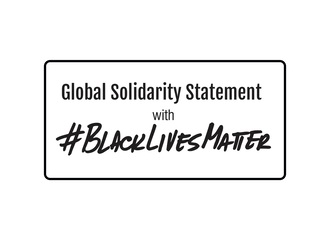
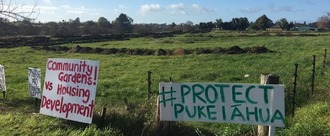

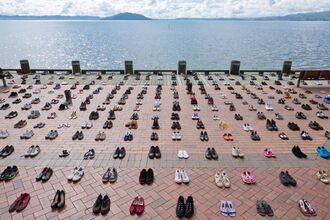

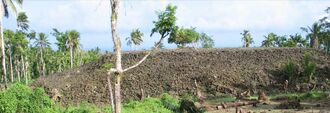

.png)

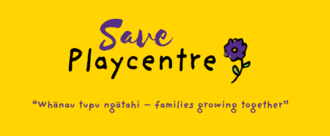
.png)
